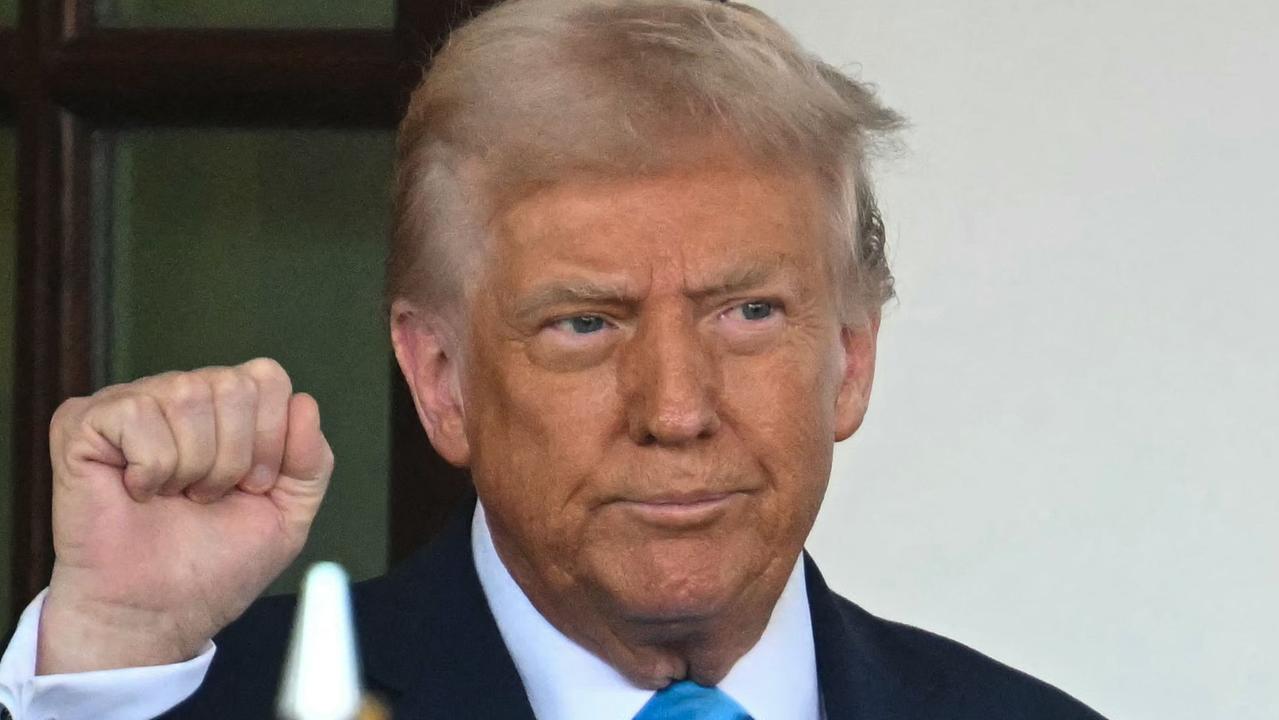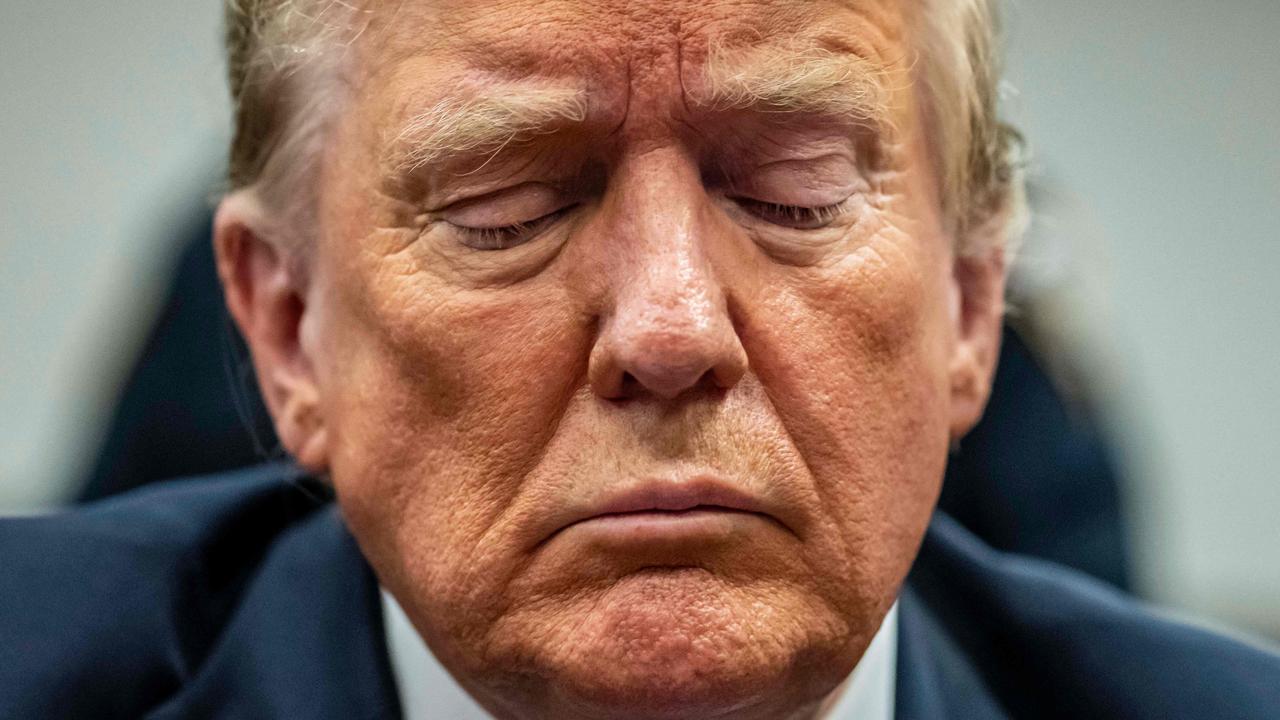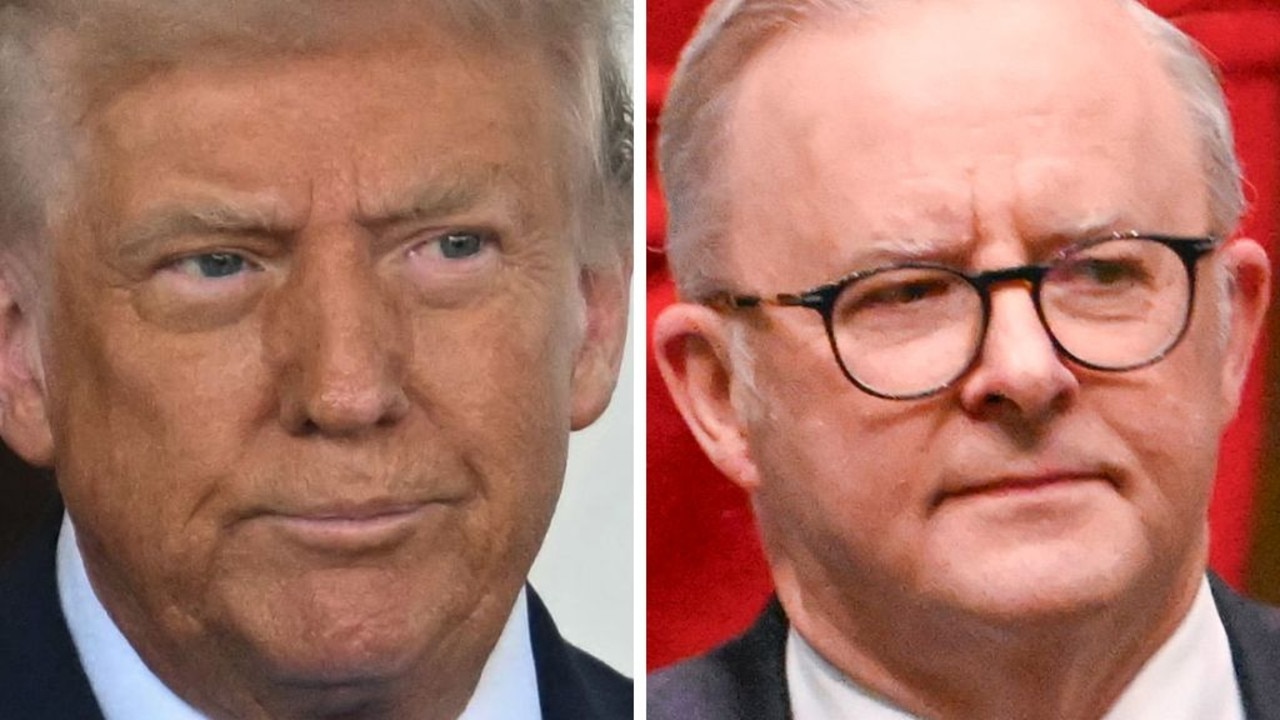US releases satellite images supporting accusation Iran was responsible for Saudi drone attacks
The US has released new satellite images supporting its accusation Iran was behind the attacks on crucial Saudi Arabian oil facilities over the weekend.

The United States has released satellite images and cited intelligence assessments supporting its accusation that Iran was behind the attacks on crucial Saudi Arabian oil facilities over the weekend.
The Trump administration released satellite photographs of what officials said were at least 17 points of impact at various Saudi energy facilities, including damage at the heart of the kingdom’s crucial oil processing plant at Abqaiq.
They said the strikes came from the north or northwest, suggesting the attack came from the direction of Iran rather than Yemen, where the Iranian-backed Houthi militia had claimed responsibility for the attack.
The satellite images show the scale of destruction at the vital oil facilities.
The red boxes indicate the areas hit in the suspected drone attack, which the US believes involved 17 individual strikes:
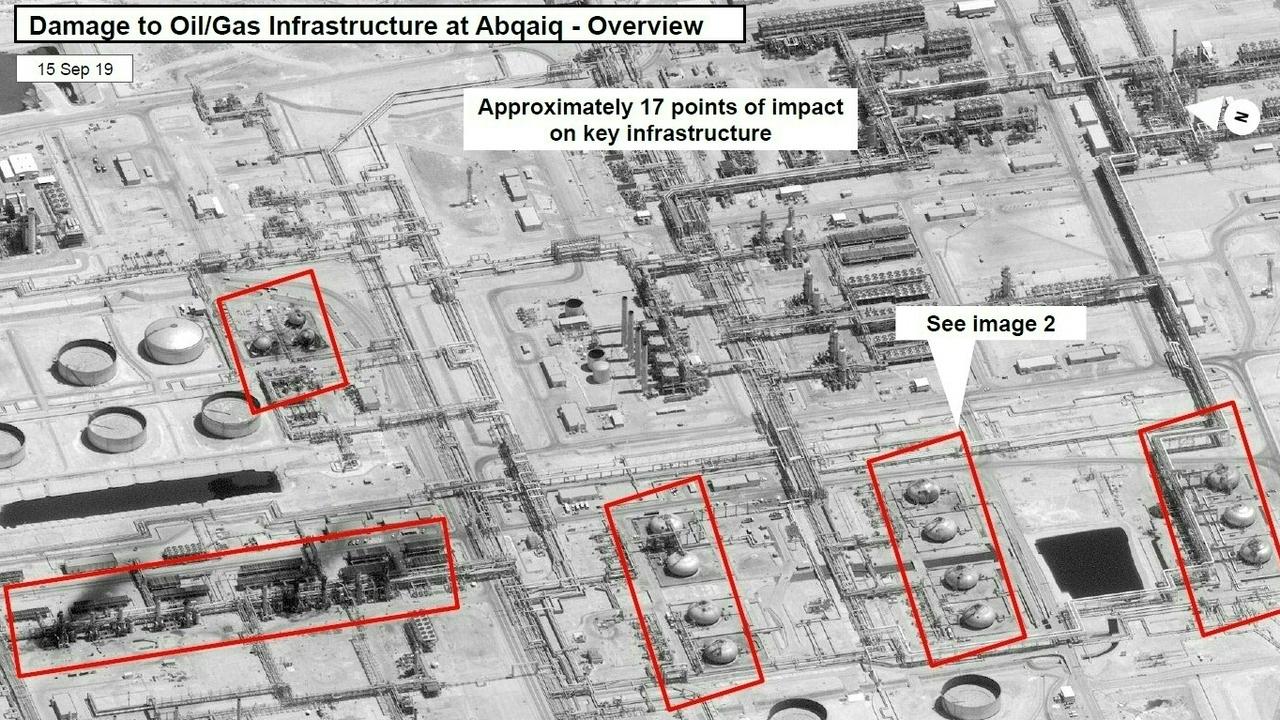
Another image shows the Khurais oilfield, which is 98 kilometres west of the Abqaiq facility:
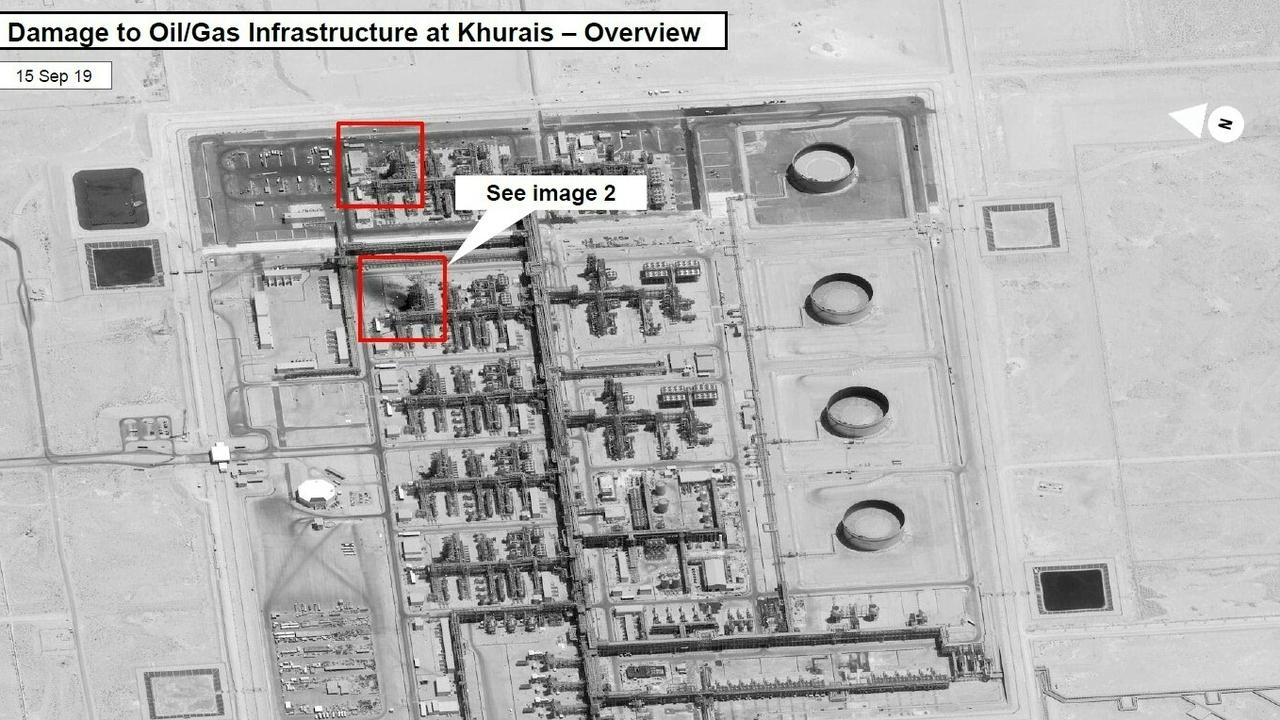
The image below shows a zoomed-in view of one of the two damaged buildings. Scorch marks from the fire appear to be visible alongside the damaged building:
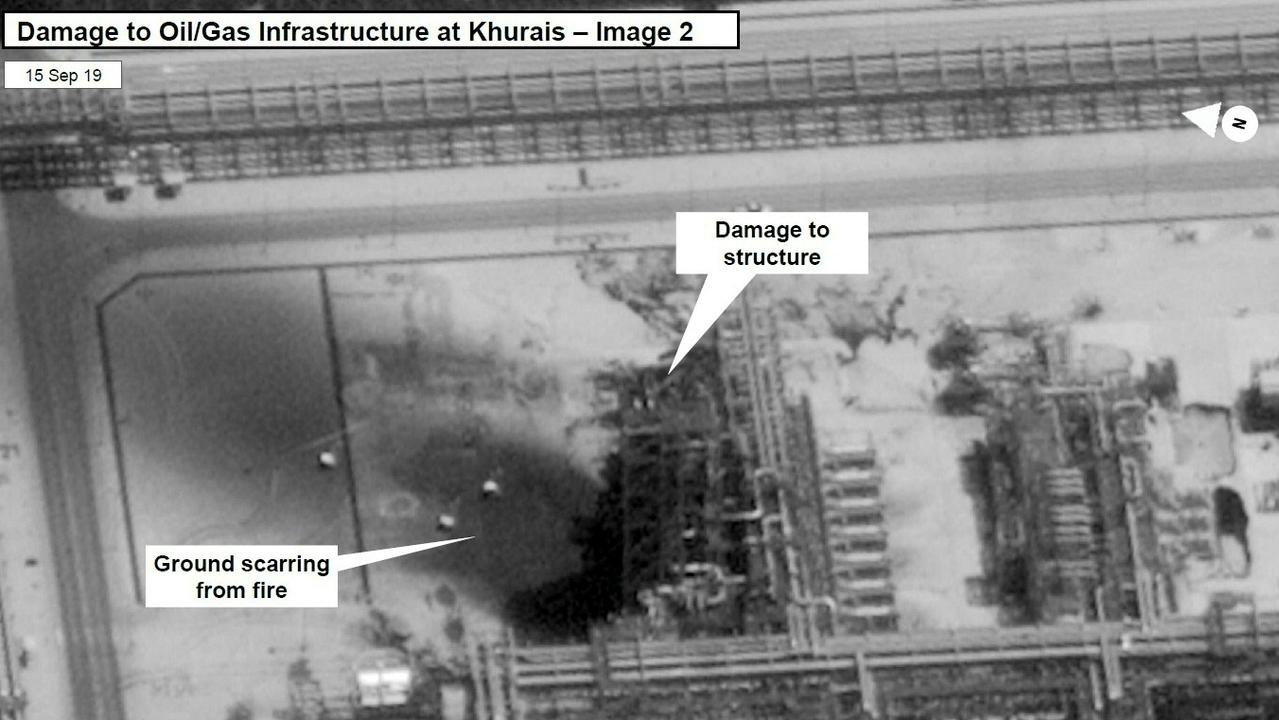
Saturday’s attack on Saudi Arabia was the most damaging blow on the Middle Eastern kingdom in more than four years of civil war in Yemen.
It helped drive world oil prices up by 10 per cent in what could cause a nightmare situation for Australia.
Abqaiq is the world’s biggest crude-stabilisation facility, refining some seven million barrels a day. Khurais produces about 1.5 million barrels of crude a day.
Overnight, Saudi Arabia has ramped up its rhetoric towards Iran, which continues to deny responsibility for the attacks.
SAUDI ARABIA HITS OUT AT IRAN
Saudi Arabia has ramped up its rhetoric towards Iran, dismissing claims of responsibility by Yemen’s Houthi rebels and pinning the blame on the Iranian Government.
A Saudi military spokesman said a preliminary investigation had found the weapons used against the facilities were Iranian, according to The Washington Post.
In a televised briefing, Colonel Turki al-Malki, a Saudi military spokesman, said the attacks did not originate in Yemen and that investigations were underway to determine the launch location.
“The preliminary results show that the weapons are Iranian and we are currently working to determine the location … The terrorist attack did not originate from Yemen as the Houthi militia claimed,” Col. al-Malki told a news conference in Riyadh.
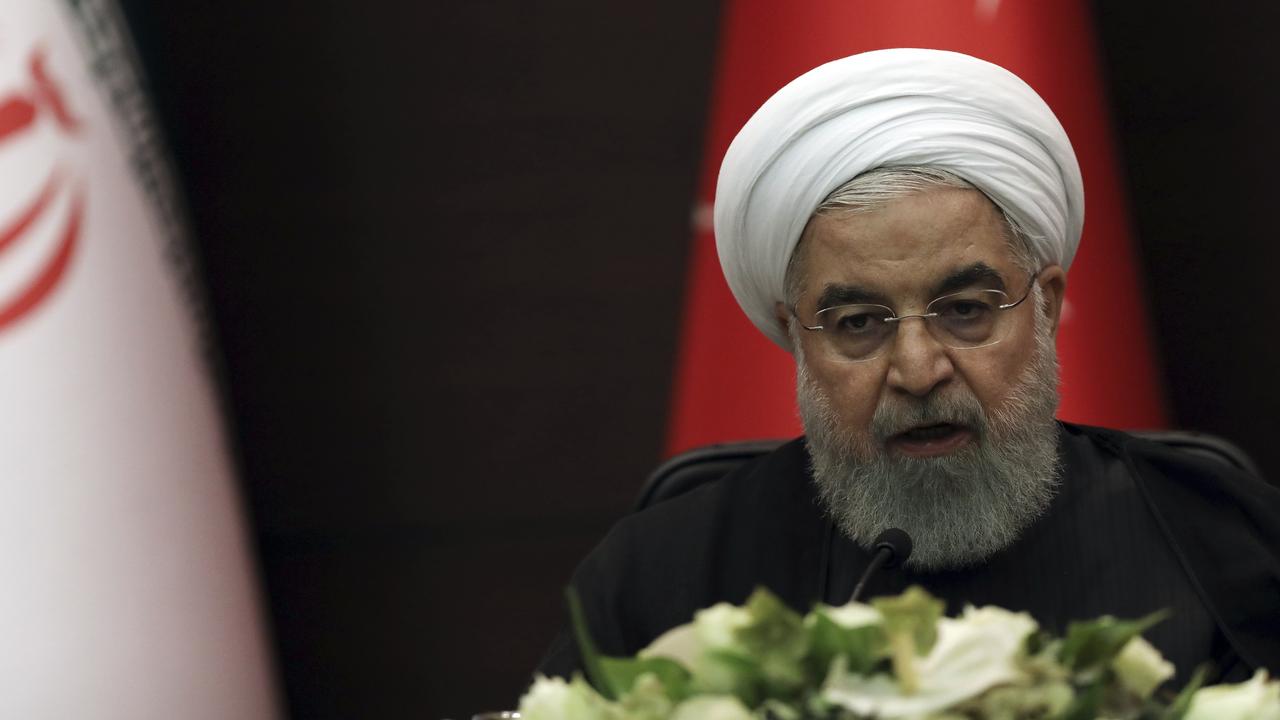
Saudi Arabia’s Crown Prince Mohammed bin Salman has said the kingdom is “willing and able” to respond to this “terrorist aggression”.
Iran has denied the accusations and said it was ready for “full-fledged war”.
Iranian President Hassan Rouhani said the strike was carried out by “Yemeni people” responding to years of attacks by a Saudi-led coalition in Yemen’s four-year-old war.
“Yemeni people are exercising their legitimate right of defence,” he told a joint news conference with his Russian and Turkish counterparts at a meeting in Ankara.
Some US officials, like Secretary of State Mike Pompeo, have directly blamed Iran for the attacks, saying the assault did not come from Yemen.
We call on all nations to publicly and unequivocally condemn Iran’s attacks. The United States will work with our partners and allies to ensure that energy markets remain well supplied and Iran is held accountable for its aggression
— Secretary Pompeo (@SecPompeo) September 14, 2019
President Donald Trump said the United States was “locked and loaded” to respond to the incident but initially stopped short of directly accusing Iran.
Saudi Arabia oil supply was attacked. There is reason to believe that we know the culprit, are locked and loaded depending on verification, but are waiting to hear from the Kingdom as to who they believe was the cause of this attack, and under what terms we would proceed!
— Donald J. Trump (@realDonaldTrump) September 15, 2019
This morning he levelled a more accusatory tweet against Iran, referencing a missile strike on a US surveillance drone over the Strait of Hormuz earlier this year:
Remember when Iran shot down a drone, saying knowingly that it was in their “airspace†when, in fact, it was nowhere close. They stuck strongly to that story knowing that it was a very big lie. Now they say that they had nothing to do with the attack on Saudi Arabia. We’ll see?
— Donald J. Trump (@realDonaldTrump) September 16, 2019
Mr Trump has since told reporters he thinks Iran was the likely culprit, but he wants to be sure and hopes to avoid war.
He said the US would be talking to Saudi Arabia, the United Arab Emirates and “many of the neighbours out there that we’re very close friends with”.
“We’re also talking to Europe,” he said, “A lot of the countries that we’re dealing with, whether it is France, Germany, talking to different folks and figuring out what they think.
“But I will tell you that was a very large attack and it could be met with an attack many, many times larger, very easily by our country.”
Iran rejected US accusations it was responsible, with Foreign Ministry spokesman Abbas Mousavi saying the allegations were “condemned as unacceptable and entirely baseless”.
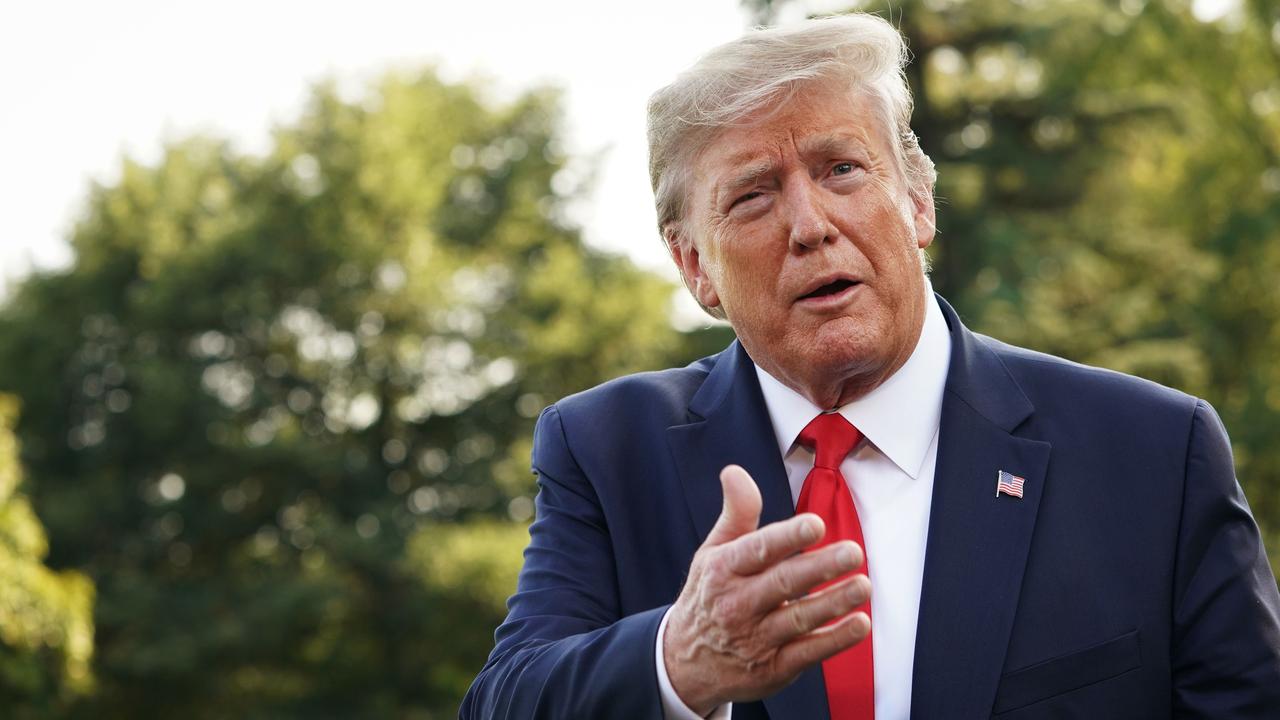
Europe and China have warned against assigning blame prematurely. Russian President Vladimir Putin offered to sell Saudi Arabia its missile defence systems on Monday in the wake of the weekend attack on its oil facilities.
“We are ready to help Saudi Arabia so that she can protect her territory. She can do so in the same way that Iran has already done in buying the S-300 Russian missile system and the same way that Turkey has already done in buying the S-400 Russian missile system,” he said at a press conference in Ankara, alongside the Turkish and Iranian leaders.
Oil prices have risen to six-month highs in the wake of the attacks, with gains as high as 20 per cent.
Brent crude oil, the international benchmark, went up $12 a barrel to reach up to $71.95 a barrel before dropping back down to $68.
Economists at London-based Capital Economics have warned a “full-blown US-Iran conflict” could cause oil to soar to $US150 a barrel this year.
However, they would expect the oil price to drop to $US80 per barrel by next year and $US60 by 2021.
— with wires

